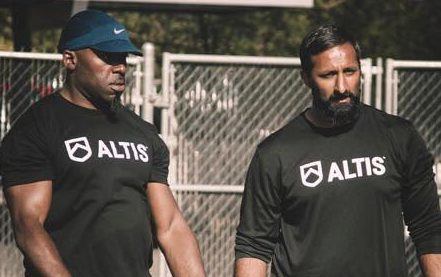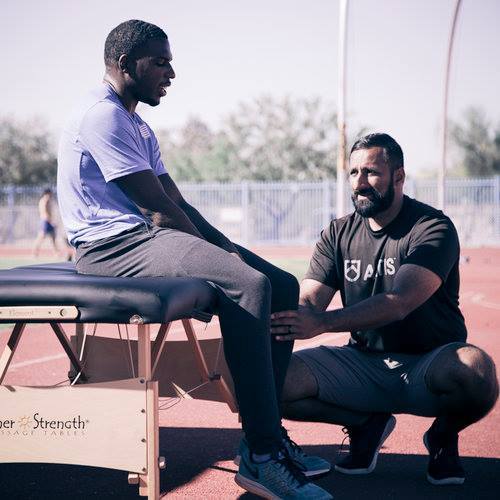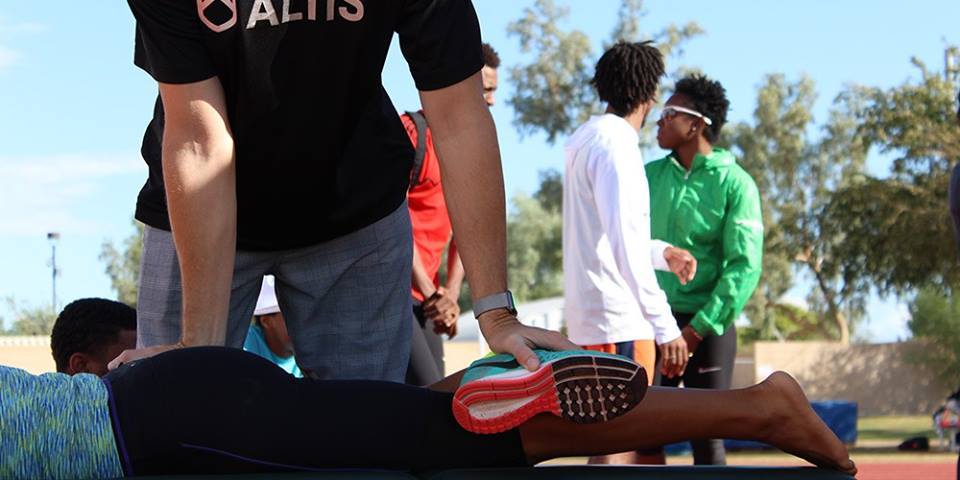Written by Dr Jas Randhawa, this first article in a series on Performance Therapy concepts shares various insights into developing a Performance Therapy Model.
“As a coach, I need to be able to transmit information in a short amount of time to someone in a crisis” – John Danaher
Time is a commodity. It is something that you cannot buy and it is certainly something you cannot buy back. As we are all allotted the same amount of time each day, how we choose to invest in that commodity today can significantly affect the dividend we are paid at the end of the season. As such, performance staffs need to invest in processes which will ultimately increase their efficiencies as a team. For us at ALTIS, utilizing Performance Therapy is one of many ways we optimize every training session, both on and off the track. As the number of organizations now utilizing Performance Therapy has grown, I am often asked by coaching staffs, “Where is the best place to start?”. The answer, of course, is “it depends”. Nonetheless, what I want to cover in a short mini-series are some potential ways to develop a Performance Therapy model. Key concepts will continually reappear over the next few posts, as the devil is in the details of the “big rocks”.
What Matters Most?
The most critical aspect of developing a Performance Therapy model is cultivating a performance culture which will allow it to flourish. A lot of insight can be gained merely by studying winning organizations and what catalyzes their success. From this process, you will inevitably discover one universal truth: people matter. Now, with that said, on the surface it may appear as if structuring this model around a multidisciplinary team would be beneficial. However, multidisciplinary and integrative are not always synonymous. The worry here is that certain individuals, or groups, will start to work in a vacuum and fracture off from the core philosophy of the team. This cycle is the beginning of what I term as the “silo effect”, and if left untreated, can become a rampant virus. What does this potentially look like? On one end of the spectrum, it could be subtle with only a minor differences occurring between the coaching and therapy staff, while on the other, it could become an all-out war over who dictates the training elements in an athlete’s program. The latter is clearly the least ideal situation to find yourself in, but unfortunately, this is a reality for some coaches working within the collegiate system. When building out our model, we must ensure that there are strategies in place to help mitigate these events from happening. At the very least, we must rectify them when they do occur to ensure we are creating an ideal culture.

Coaching education is often a high priority for many organizations. From my own experience, I can tell you that the organizations truly challenging the status quo are the ones investing in processes which allow the cross-pollination of ideas to occur. The expression, “thinking outside the box” is one we are all familiar with. It embodies the idea that studying concepts which may seem foreign to our specific field may help to unravel underpinnings which were previously unknown. In essence, this is what happens when we start to invest in cross-pollinating our educational ideologies. Coaches who begin to invest in their understanding of human anatomy and physiology can gain insight into their technical model. Furthermore, therapists who study kinematics and kinetics of sprinting, for example, may begin to change their treatment strategies. When we apply this to our Performance Therapy model it helps to buffer the “silo effect” as common ground is being built between all team members. At the organizational level this process must be a two-way street: coaches need to understand therapy and therapists need to understand coaching. If we expand this concept to the realms of high performance, therapists must be particularly astute in their understanding of notational analyses. This, of course, is a lengthy process but with the help of the coaching staff can be one that has the most impact.
In the name of brevity, I will define notational analyses as the study of movement patterns, competencies, tactics, and strategies. However, I urge the reader to review this concept further. Classically, notational analyses have been used in gymnastics as the foundation of how critical events within a performance are quantified on a consistent and reliable basis. This is akin to coaching to a technical model which, after years of trial and error, forms the basis of your coaching philosophy. Now, it is understood that this technical model will change over time. However, as your experience grows, what should not change is it’s importance to the process of cross-pollination. This becomes exceptionally relevant, with a therapy staff that prioritizes injury management/prediction (a highly debatable topic). Without a real understanding and appreciation for the theoretical and, more importantly, the practical determinants of performance/injury, the therapy staff can quickly fall into a myopic view of therapy. As performance gain and injury risks are not solely the result of linear processes, we understand dynamical systems are at play when we discuss both of these parameters.
This view, however, can become distorted when we start to neglect the practical aspect of athlete management, which inevitably will lead to the skewing of our therapeutic interventions. For example, how one chooses to manage a dysfunction at the knee can vary greatly. Do you utilize a tabletop or dynamic test which isolates the knee? Do you also look at the technical demands being placed on the knee and which strategies the athletes are utilizing to meet these requirements? To build on this (and please remember this is merely an example) would you rely on potentially non-specific testing, such as dynamical knee valgus, as a potential marker of therapeutic input or screening? Although there may be a time and a place for these practices, what must be clear is that we should not disregard the actual demands of the athlete as a potential screen for what is driving dysfunction. Being proficient in notational analysis can then be thought of as a key performance indicator for Performance Therapy. Again, this process is one that will be continually evolving, but will ensure that the coaching and therapy staff is regularly communicating and that all pathways to effective treatment remain open.

In the series set to follow, we will continue to develop the concepts we have discussed above. Specifically, we will detail how both communication and the idea of immediacy allow the optimization of performance within a training session.

